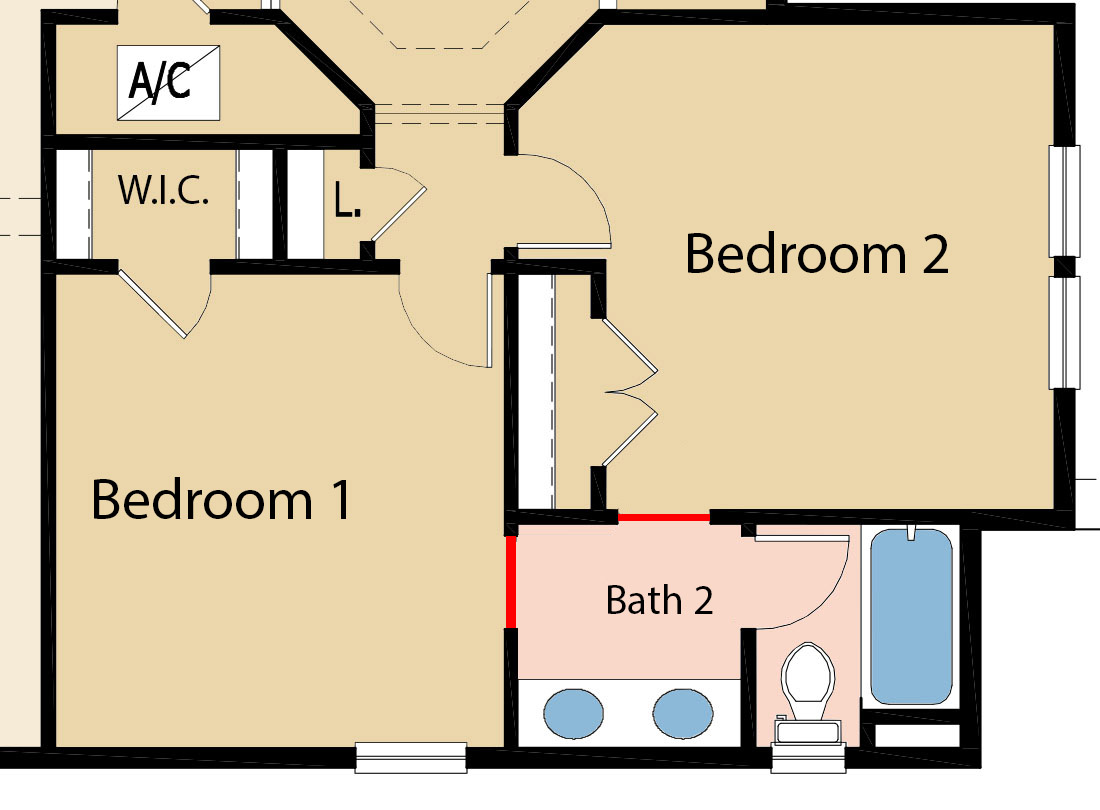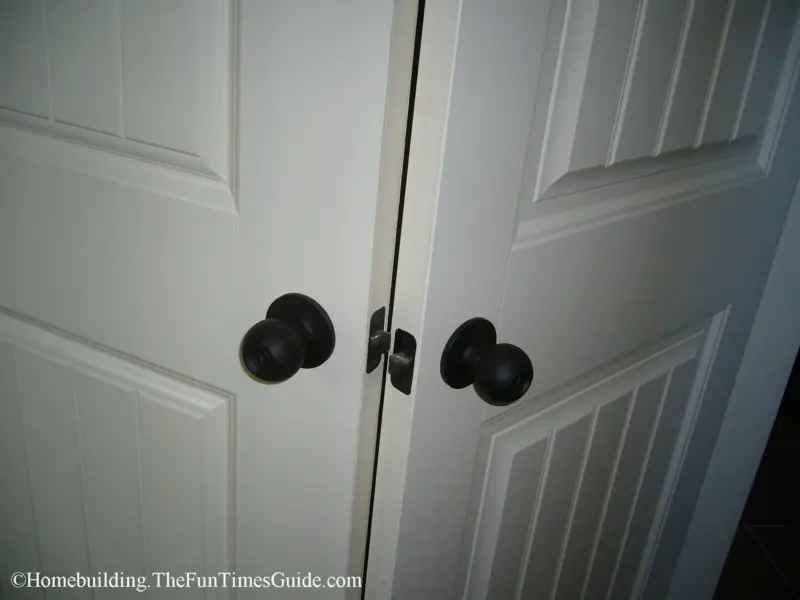The History and Evolution of Bathroom Door Locks

The bathroom, a sanctuary of privacy and personal hygiene, has evolved alongside the development of door locks. From rudimentary latches to sophisticated privacy mechanisms, bathroom door locks have undergone a fascinating transformation, reflecting changing societal norms and technological advancements.
The Early Beginnings of Bathroom Door Locks
Early civilizations used basic forms of locks to secure valuables and personal spaces. In ancient Egypt, for example, wooden doors were often secured with simple latches that could be bolted from the inside. These early locks were primarily designed for security, rather than privacy. As societies developed, the need for privacy in personal spaces, such as the bathroom, became increasingly important.
The Emergence of Privacy Locks
The concept of a privacy lock, specifically designed for bathrooms, emerged in the late 19th century. These locks, often featuring a simple knob or lever handle, provided a basic level of privacy. The key innovation was the addition of a latch that could be engaged from the inside, preventing entry unless a key was used. This development significantly improved the privacy and security of bathroom spaces.
The Evolution of Modern Bathroom Door Locks
Modern bathroom door locks have incorporated a wide range of features, enhancing both security and convenience. The introduction of deadbolt mechanisms, which engage a locking bolt into a strike plate, significantly increased the security of bathroom doors. These locks, typically found in high-security settings, offer greater resistance to forced entry.
Types of Modern Bathroom Door Locks
The most common types of modern bathroom door locks include:
- Privacy Locks: These locks offer a basic level of privacy, typically with a simple knob or lever handle that can be locked from the inside. They are commonly used in residential bathrooms.
- Deadbolt Locks: These locks provide a higher level of security, featuring a bolt that engages into a strike plate when locked. They are often used in commercial bathrooms or in situations where increased security is required.
- Electronic Locks: These locks use electronic mechanisms, such as key cards or biometric scanners, to control access. They are becoming increasingly popular in modern buildings, offering convenience and enhanced security.
Key Features of Modern Bathroom Door Locks
Modern bathroom door locks are designed with a variety of features to enhance privacy and security. These features include:
- Latch Mechanism: A latch mechanism is a key component of most bathroom door locks. It allows the door to be locked from the inside, preventing entry without a key.
- Deadbolt Mechanism: A deadbolt mechanism, when present, provides an additional layer of security by engaging a bolt into a strike plate. This makes it more difficult to force the door open.
- Keyhole Cover: A keyhole cover helps to protect the keyhole from dust, dirt, and debris. It also provides a small level of security by making it more difficult to pick the lock.
- Anti-theft Features: Some bathroom door locks incorporate anti-theft features, such as tamper-resistant screws or reinforced strike plates, to make it more difficult for thieves to gain entry.
Understanding the “Jack and Jill” Bathroom Design

The “Jack and Jill” bathroom design is a popular choice in homes with multiple bedrooms, offering a shared bathroom space accessible from two different rooms. This layout typically features a single bathroom with two separate entrances, one from each bedroom, often connected by a shared hallway.
The “Jack and Jill” bathroom layout presents unique challenges and considerations when it comes to securing the doors. The shared access requires a door locking mechanism that provides privacy and security for each individual while allowing access from both sides.
Door Lock Configurations in “Jack and Jill” Bathrooms
The choice of door lock configuration for a “Jack and Jill” bathroom is crucial to ensure privacy and security. Here are some common configurations:
- Double-Sided Privacy Locks: These locks feature a latch on both sides of the door, allowing access from either bedroom. The latch can be released with a knob or lever handle, and a privacy button on the inside prevents accidental opening. This configuration is suitable for families with children, as it allows them to lock the bathroom from the inside while still allowing parents to enter if needed.
- Passage Locks: Passage locks are commonly used in interior doors where privacy is not a primary concern. They have a latch on one side and a knob or lever handle on the other. This configuration allows easy access from both bedrooms, but it does not offer privacy, as anyone can enter the bathroom from either side. Passage locks are often used in “Jack and Jill” bathrooms for a more open and accessible layout.
- Privacy Locks with Deadbolts: This configuration provides the highest level of security, offering both privacy and a deadbolt for extra protection. The privacy lock allows for easy access from both bedrooms, while the deadbolt provides an additional level of security that can only be unlocked with a key. This option is particularly suitable for families who want to ensure privacy and security for all users.
Choosing the Right Bathroom Door Lock for a “Jack and Jill” Bathroom: Jack And Jill Bathroom Door Lock
A “Jack and Jill” bathroom, shared by two rooms, requires a door lock that balances privacy with convenience. This unique design presents specific considerations for choosing the right lock, ensuring both occupants can enjoy their space while maintaining security and ease of use.
Privacy and Security Considerations
A key factor in selecting a lock for a “Jack and Jill” bathroom is the level of privacy required. While a traditional keyed lock offers maximum security, it may not be practical for frequent shared use. Consider the following factors:
- Privacy Needs: Determine the desired level of privacy for each room. If one room is used more frequently by children or guests, a lock that allows for quick entry may be preferable.
- Security Concerns: Evaluate the need for security. If valuables are kept in the bathroom, a more robust lock with a deadbolt mechanism may be necessary.
Ease of Use and Compatibility, Jack and jill bathroom door lock
A “Jack and Jill” bathroom often involves frequent access for multiple users. Choosing a lock that is easy to use and compatible with existing hardware is crucial.
- Lock Mechanism: Consider the type of lock mechanism, such as lever handles, knobs, or push-button locks. Lever handles are generally easier to operate for people with limited dexterity, while knobs may be more secure.
- Compatibility: Ensure the chosen lock is compatible with the existing door and hardware. This includes the door thickness, the type of latch, and the backset (distance from the edge of the door to the center of the latch).
Types of Door Locks for “Jack and Jill” Bathrooms
A variety of door lock types are suitable for “Jack and Jill” bathrooms, each with its own advantages and disadvantages.
| Lock Type | Pros | Cons |
|---|---|---|
| Privacy Lock | Easy to use, provides basic privacy, often found in budget-friendly options | Offers minimal security, can be easily bypassed |
| Keyed Lock | Provides high security, ideal for valuables storage, offers full privacy | Requires a key for entry, can be inconvenient for shared use |
| Passage Lock | No lock mechanism, allows free passage, often used in hallways or between rooms | Provides no privacy, not suitable for bathrooms |
| Smart Lock | Provides keyless entry, can be controlled remotely, integrates with home automation systems | Requires batteries, may be expensive, potential security risks |
Choosing the Best Option
Ultimately, the best door lock for a “Jack and Jill” bathroom depends on the specific needs and preferences of the occupants. Consider factors such as privacy needs, security concerns, ease of use, and compatibility with existing hardware.
A Jack and Jill bathroom door lock can be a practical solution for shared spaces, but it can also present design challenges. If you’re looking for a more stylish and functional alternative, consider using a barn door for a bathroom.
This can create a unique and visually appealing entrance, while still allowing for a separate lock on each side for privacy.
The Jack and Jill bathroom door lock, a common feature in multi-person households, often presents a unique set of challenges. While it aims to provide privacy, it can also lead to disputes over who gets to use the bathroom first.
The St. Louis Blues bathroom, as seen on this website , offers a glimpse into the personal space of a beloved hockey team. Similarly, the Jack and Jill bathroom, though seemingly simple, can reveal much about the dynamics of a family or shared living space.
